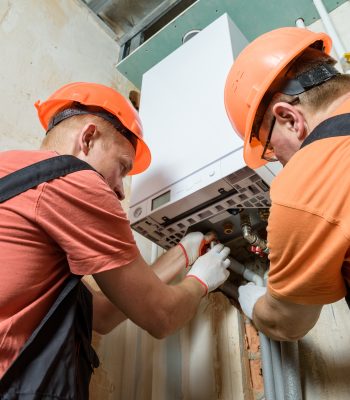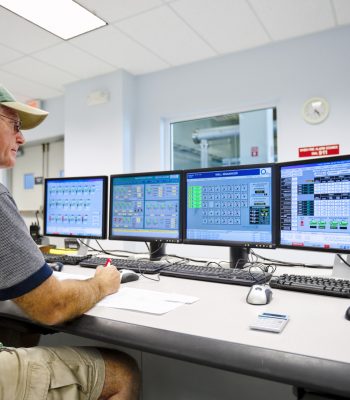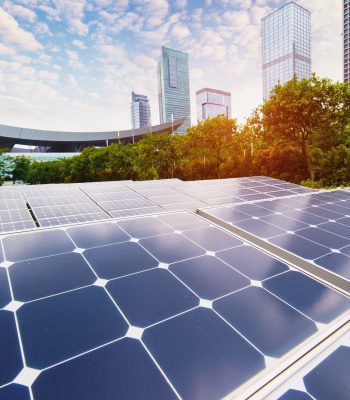Description
Introducing digital solutions to the district heating or energy sector holds great potential. It should, for example, increase operational efficiency, facilitate new, sustainable sources of heat and improve the efficiency of energy consumption. However, before contemplating top-end digital solutions, it is important to get the basics right throughout the system. One way to look at the sector is to divide it into the supply side, which includes heat production and transmission, and the demand side, comprising commercial, institutional and residential end users.[i]
Getting the basics right on the demand side means having the right framework in place to encourage or mandate consumption-based metering and billing. Ideally, this should be at apartment level, but building-level metering and billing in tandem with individual heat substations are often a good place to start. There should also be a framework requiring minimum technical standards for metering, ideally covering the remote reading and monitoring capabilities of metering devices.[ii]
On the supply side, the basics should include a standardised approach to the monitoring and analysis of key operating parameters, from individual heat substations at building level to key points on the network and heat generation facilities. These should all be visible in a modern, centralised control system (or supervisory control and data acquisition (SCADA) system).
With the basic measuring and monitoring infrastructure in place, there are a number of digital and smart platforms that can perform data analysis, recommend more efficient operating patterns, foresee potential faults, generally improve reliability and reduce the energy consumption of these systems. On the demand side, for end users, there are various forms of metering and management solutions available, enabling the remote and automated management of heating or cooling supply.
The following illustrates common technologies adopted in the development of smart district energy in more detail, including (i) the introduction/use of sensors and metering in distribution systems; (ii) the introduction of a SCADA system; (iii) data analysis and forms of automated operation/optimisation; (iv) smart meters and management systems for end-users; and (v) green district energy technologies.
- Sensors and meters
Intelligent district energy systems are based on sensors, meters and smart grid-integrated communications. Various devices measure the status of equipment at key points on the network and at each substation, then send diagnostic signals for further processing and analysis by the SCADA system and control centre.[iii] Devices installed at the substation may include heat meters on primary supply lines, sensors to gauge outdoor temperature, communications equipment and temperature sensors on the supply and return pipelines. Heat cost allocators are considered a sufficient technical solution in older buildings, where retrofitting an individual apartment meter would require costly piping renovations. Leak detection, combined with a geographic information system (GIS) that provides positional data on the pipe networks and other infrastructure, helps identify the exact location of an incident, ensuring the safety of the system and reducing energy waste.
Municipalities could integrate SCADA systems to manage the aforementioned large-scale sensors, devices and smart meters located in the distribution network, as well as the data generated. This system-integrated hardware and software, with data acquisition, monitoring, processing and control management functions, presented in a human machine interface, is used to monitor and supervise the actual status of flow, pressure, and forward and return temperatures at the network end points.
These measurements can also be used to estimate the status of all positions in the network. Continuous comparison helps to identify any potential defects, outliers or dangerous situations in the distribution network, enabling immediate response to alarm signals.
SCADA is usually adopted to control and manage equipment and machinery located at multiple sites through a complicated process. It is seen as a means of reducing operating costs, meeting consumer needs and fulfilling regulatory requirements.[vii] It is also a necessary step in moving from a production-led model of heat supply to a demand-led model in which heat is produced and distributed based on actual demand.
- Data analysis and forms of automated operation/optimisation
In addition to actual status management, predicting and organising heat loads according weather conditions and historical data is also an important step in intelligent district heating systems. Using historical data on climate and the parameters of heating supply in different periods, the heat load can be pre-regulated for different weather conditions, improving consumer comfort.
Hydraulic modelling, a form of real-time and operational monitoring, is a useful tool for distributing heating water based on demand. Unlike other forms of intelligent district heating systems, hydraulic models require a number of specialised software packages. The optimisation of thermal operations is done using big data analysis and artificial intelligence (AI). Various data are required to find the best balance of supply temperatures and flow in order to predict future demand and pre-adjust operational parameters, including:[viii]
- Historical and real-time demand data for various times of day and weather conditions
- Economic data, such as the price of fuel and electricity
- Network environment data, including transmission times and network losses.
- Smart meters and management systems for end users[ix]
The deployment of smart metering at dwelling level requires heating consumption data not only for billing, but also user behavioural data that can be analysed to forecast district heating consumption, optimise network operation and improve performance. The installation of smart meters allows end users to control their heating remotely, turning it on and off and adjusting the temperature through a mobile app. It also optimises heat settings automatically and adjusts boiler output based on internal and external temperatures.[x]
Doing away with the need to invest in additional capacity means that smart meters improve the efficiency of existing distribution networks. In addition, the collected data can be used to provide end users with information on their consumption and payments, as well as to suggest certain energy-efficiency initiatives (for example, on flow, return temperature and cooling) to lower consumption-based billing.[xi]
The preconditions for consumption-based billing and smart metering at dwelling level should be put in place throughout the system. These should not be limited to the procurement and deployment of heat meters and thermostatic radiator valves, but also involve careful planning for financing and implementation (such as subsidy and distribution programmes for end users through heating utilities), accompanied by extensive public outreach campaigns.[xii]
- Green district energy technologies
Heating and cooling production can involve multiple heat sources, including various forms of renewable energy and excess heat from industrial or urban sources. It can actively incorporate thermal energy storage and, optimally, be integrated into the electricity grid. Improvements to networks are also needed to reduce operating temperatures, integrate greater quantities or facilitate the use of renewables or excess heat supplies. However, this approach makes district energy operations more complex, increasing the need for real-time information and advanced forms of automation.
A green improvement on the demand side may focus on the introduction of consumption-based billing by installing smart metering in residential buildings. Introducing cost-reflective prices for heating and putting consumption-based billing into practice is fundamental to realising the financial viability of energy-efficiency investments. Improving the building envelope, by insulating walls and repairing doors and windows, for example, also plays a vital role in greater energy efficiency.

Resource implications and key requirements
Data acquisition and stable communications
At a fundamental level, to optimise district energy operations, a sufficient amount of historical and real-time data must be available in a stable data-transmission environment. This can not only improve operations, but increase end-user engagement in and awareness of energy consumption through measured metering and billing.[xiii]
Financial and human resources
The development and maintenance of a smart district heating system requires high-level technical expertise. Specialist knowledge of district heating design, data analysis, automated operations and IT capacity, among other things, is required to develop an overall optimisation plan and ensure its successful implementation. In addition to internal resources, technical support from external experts is often needed.
The cost of developing and implementing intelligent district heating is high, spanning digital infrastructure, sensors, metering and equipment, as well as labour costs.
In 2016, to rehabilitate and upgrade the district heating infrastructure of Kostanay, Kazakhstan, the European Bank for Reconstruction and Development (EBRD) provided a capital investment loan of €7.3 million. The work included renovating the city’s generation facilities for heat and combined heat and power, upgrading the heat supply network and introducing a SCADA system.[xiv]
While the costs of introducing smart systems are not trivial, they are usually recouped in terms of improved efficiency and service quality. For example, the city of Čačak, Serbia adopted advanced technologies and equipment in its district energy system. A SCADA system was installed in the 25 most inefficient substations controlled by the regular operating algorithm. The improvements reduced natural gas consumption in the 2019-20 heating season by 33 percent and the total deployment costs of €130,000 (€5,200 per SCADA) were recouped within one heating season.
Legislation and regulation
Smart-metering installation at household and building level generates a large amount of sensitive data. For instance, energy consumption data can be used to deduce household behavioural patterns, determine personal and socioeconomic information, figure out a user’s potential electrical equipment and monitor usage, or analyse their activity. Other personal information can be found in the smart-grid context, such as addresses, contact and bank account details.[xv] Thus, cities may need regulation in place that clearly defines issues such as the use of such data, transmission methods and compliance with privacy and security legislation.

Potential private-sector participation
The operation and management of district heating services has traditionally been the domain of the public sector. Recurring challenges, such as inadequate maintenance, insufficient funds for infrastructural development and poor planning and project selection are some of the key reasons municipalities are now considering alternative models involving the private sector.
The lack of a predictable and stable regulatory framework that allows for a suitable return on investment is the biggest obstacle to greater private-sector participation in the economies where the EBRD invests. Municipalities can take various actions to attract private capital to the district heating sector and ensure the conditions for its successful development through partnership with the private sector. One way to do this efficiently is to develop a pipeline of pilot projects in municipal services (including district heating) and seek international assistance to develop the transactional structure of pilot projects.[xvi]
Private-sector participation in the district heating sector can take the form of public-private partnerships (PPPs), management contracts, lease contracts or concessions. There are also models designed to tackle specific challenges in the district heating supply chain, such as heat entrepreneurship and energy service companies (ESCOs), which are being widely implemented.[xvii]
Involving the private sector typically results in better district heating services, as it can provide a long-term investment perspective while enabling access to additional sources of funding. It also fosters innovation and brings valuable private-sector experience.

Implementation obstacles and potential solutions
Technical barriers
Smart district energy technologies include smart meters, the internet of things (IoT), big data, cloud computing and AI technology. The current information and communications technology (ICT) for system automation in the energy sector is limited in many EBRD cities. Even where the technology is available, awareness of the benefits of digitalisation for heating and cooling is low. For instance, thermostats are still largely limited to room temperature control. Although they are programmable, many building users are not aware of such functions.[xviii]
Concerns about data quality and cybersecurity will exacerbate difficulties in integrating the new technologies with existing equipment, data interoperability between different applications, the harmonisation of communication protocols and network operation.
Hence, it is crucial to have common standards and interoperability (data format and communication protocols, for example) in place prior to digitalising heating systems. For instance, smart meters, SCADA and AI optimisation may be owned by different stakeholders with different data formats and platforms. Interoperability plays a vital role in enabling seamless communication between them. In particular, there needs to be a roadmap for the fourth generation of district heating (4DH), including various energy sources and cooling plants, where common standards and interoperability are of primary importance.[xix]
In some cases, old meters and equipment may be unable to connect and communicate with modern systems. Cities can use IoT technology to upgrade such equipment with basic communication functions and replace them step by step.[xx] The United Kingdom has encouraged the replacement of old smart meters by paying for the installation of the latest version by mid-2025 to ensure that smart meters in every household fit the government’s technical specifications.[xxi]
Non-technical barriers
Digitalising existing district heating systems is a challenge, with high entry cost-related risk, complicated by a dearth of precise regulation and market mechanisms. Cities can increase collaboration with the private sector through a conventional PPP model, garnering support from telecoms companies or applying for loans or grants from international financial institutions.
The lack of a clearly defined legal framework on smart metering may result in resistance to meter deployment from citizens, so it is crucial to establish regulation on how sensitive data will be used and protected through legal and technical means. Cities in Europe may follow the European Union’s General Data Protection Regulation (GDPR), which addresses data protection on smart devices and meters. [xxii], [xxiii]
A research study by the London School of Economics examining the United Kingdom’s smart meter implementation found that incentivising households encouraged additional adoption, especially when coupled with a social information campaign. The study concluded that people’s resistance to smart metering was complex and could stem from a range of issues, from low awareness about the adoption of new technology to the physical and structural constraints of dwellings that made smart-meter installation impossible. Hence, cities and utilities can engage with households to identify the barriers to and drivers of adoption and form a complete set of policies, potentially including financial incentives.[xiv]

References
[i] World Bank (2019), Paving the Way to a Sustainable Heating Sector, Washington, DC. Available at: https://openknowledge.worldbank.org/bitstream/handle/10986/31571/Paving-the-Way-to-a-Sustainable-Heating-Sector-A-Roadmap-for-Ulaanbaatar-Urban-Heating.pdf?sequence=1&isAllowed=y.
[ii] EBRD (2018), Making district heating happen: empowering users through fair metering, London. Available at:
[iii] A. Grzegórska, P. Rybarczyk, V. Lukoševičius, J. Sobczak and A. Rogala (2021), “Smart Asset Management for District Heating Systems in the Baltic Sea Region”, Energies, 14(2): 1-25. Available at: https://ideas.repec.org/a/gam/jeners/v14y2021i2p314-d476909.html.
[iv] DHC+ Technology Platform (2019), Digital roadmap for district heating & cooling, Brussels. Available at: https://www.iea-4e.org/wp-content/uploads/publications/2019/01/09h_-_digital_roadmap_for_district_heating_and_cooling.pdf.
[v] A. Grzegórska, P. Rybarczyk, V. Lukoševičius, J. Sobczak and A. Rogala (2021), “Smart Asset Management for District Heating Systems in the Baltic Sea Region”, Energies, 14(2): 1-25. Available at: https://ideas.repec.org/a/gam/jeners/v14y2021i2p314-d476909.html.
[vi] IIoT World (2017), “SCADA for Remote Utilities Monitoring: 4 Layers to Grasp”, Cleveland, OH. Available at: https://iiot-world.com/industrial-iot/connected-industry/scada-systems-for-remote-utilities-monitoring-the-four-layers-you-need-to-understand/#:~:text=They%20pull%20together%20hardware%2C%20software,and%20the%20SCADA%20host%20platform.
[vii] J. Mantle (2019), “The 5 Layers of the Automation Pyramid and Manufacturing Operations Management”, Syspro, 13 August. Available at: https://www.syspro.com/blog/erp-for-manufacturing/the-5-layers-of-the-automation-pyramid-and-manufacturing-operations-management/.
[viii] DHC+ Technology Platform (2019), Digital roadmap for district heating & cooling, Brussels. Available at: https://www.iea-4e.org/wp-content/uploads/publications/2019/01/09h_-_digital_roadmap_for_district_heating_and_cooling.pdf.
[ix] EBRD (2018), Making district heating happen: empowering users through fair metering, London. Available at:
[x] Energy Saving Trust (n.d.), “Guide to smart meters”, Cardiff, UK. Accessed July 2021. Available at: https://energysavingtrust.org.uk/advice/guide-to-smart-meters/.
[xi] READY (n.d.), “About Aarhus”. Accessed May 2021. Available at: http://www.smartcity-ready.eu/about-aarhus/.
[xii] World Bank (2019), “Paving the Way to a Sustainable Heating Sector”, Washington, DC. Available at: https://openknowledge.worldbank.org/bitstream/handle/10986/31571/Paving-the-Way-to-a-Sustainable-Heating-Sector-A-Roadmap-for-Ulaanbaatar-Urban-Heating.pdf?sequence=1&isAllowed=y.
[xiii] S. Schelle Jensen (2018), “Introducing SCADA for district heating distribution”, Aalborg, Denmark: Kamstrup. Available at: https://smartenergysystems.eu/wp-content/uploads/2019/04/Steen_Schelle_Jensen_2018.pdf.
[xiv] EBRD (2016), “Kostanay District Heating sub-project”, London. Available at: https://www.ebrd.com/work-with-us/projects/psd/kostanay-district-heating-subproject.html.
[xv] J. Martinez, A. Ruiz, J. Puelles, I. Arechalde and Y. Miadzvetskaya (2020), “Smart Grid Challenges Through the Lens of the European General Data Protection Regulation”. In: A. Siarheyeva, C. Barry, M. Lang, H. Linger and C. Schneider (eds.) Advances in Information Systems Development. ISD 2019. Lecture Notes in Information Systems and Organisation, Vol 39. Cham, Switzerland. Springer. Available at: https://link.springer.com/chapter/10.1007/978-3-030-49644-9_7.
[xvi] IFC (2014), “Unlocking the potential for private sector participation in District Heating”, Washington, DC. Available at: https://www.ifc.org/wps/wcm/connect/topics_ext_content/ifc_external_corporate_site/sustainability-at-ifc/publications/p_report_unlockingprivatesectorheating.
[xvii] Ibid.
[xviii] L. Lyons (2019), Digitalisation: Opportunities for
heating and cooling. Luxembourg: Publications Office of the European Union. Available at: https://publications.jrc.ec.europa.eu/repository/handle/JRC116074.
[xix] Ibid.
[xx] DHC+ Technology Platform (2019), Digital roadmap for district heating & cooling, Brussels. Available at: https://www.iea-4e.org/wp-content/uploads/publications/2019/01/09h_-_digital_roadmap_for_district_heating_and_cooling.pdf.
[xxi] Energy Saving Trust (n.d.),“Guide to smart meters”, Cardiff, UK. Accessed July 2021. Available at: https://energysavingtrust.org.uk/advice/guide-to-smart-meters/.
[xxii] Cranium (n.d.), “Smart Energy and GDPR for utility”, Brussels. Accessed May 2021. Available at: https://gdpr.be/uncategorized/smart-energy-gdpr-utility/.
[xxiii] Frost & Sullivan (2018), “Impact of General Data Protection Regulation (GDPR) on Smart Meters and Smart Pumps”, London. Accessed May 2021. Available at: https://ww2.frost.com/frost-perspectives/impact-of-general-data-protection-regulation-gdpr-on-smart-meters-and-smart-pumps/.
[xiv] LSE (2020), “The UK Government and energy suppliers should consider a household subsidy plus a more varied information campaign to increase smart meter uptake”, London. Available at: https://www.lse.ac.uk/granthaminstitute/news/the-uk-government-and-energy-suppliers-should-consider-a-household-subsidy-plus-a-more-varied-information-campaign-to-increase-smart-meter-uptake/.








